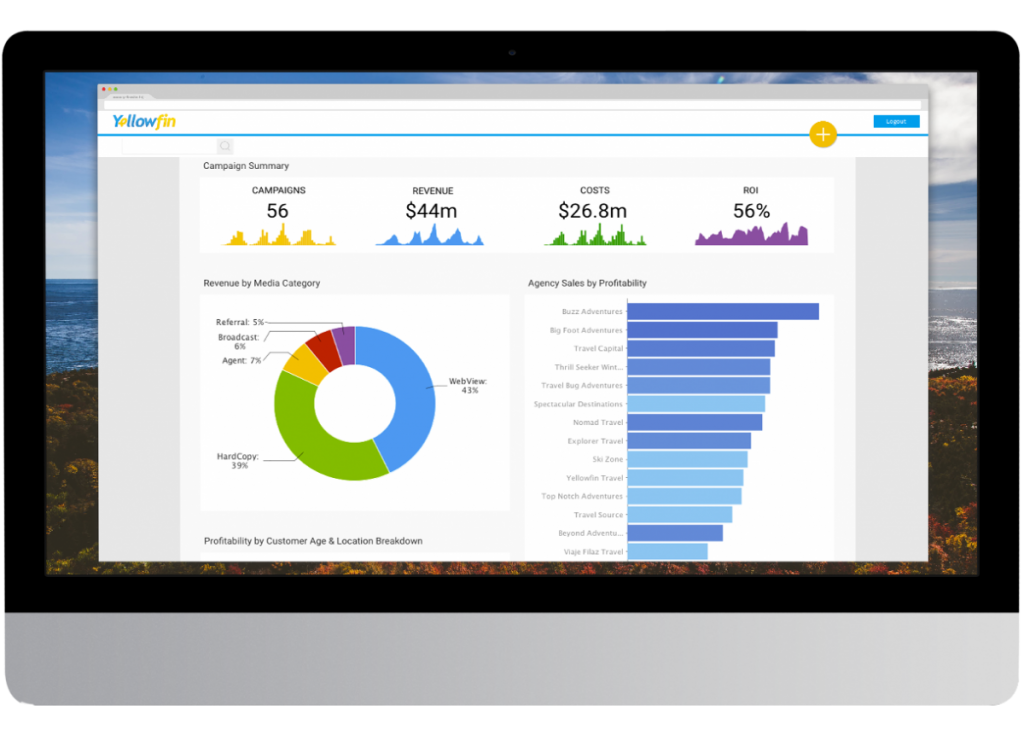
Does your Business Intelligence System help produce an educated business plan?
Every organization that wants to improve its prospects should be committed to some degree of habitual self-reflection. The common questions asked by management at any level may be some of the following:
- What are our best-performing products? And why are they the best – is it because their production and supply are the least painless? Or because, despite the odds, because they’re the most profitable?
- Can areas in the business be improved? What are the sticking points that crop up, month after month, and have a deleterious effect on the business?
- If stock attrition is out of the ordinary, do you know why? And what can be done to combat the issue?
- Why are accounting errors cropping up? Why are predicted figures chronically different from up-to-date P & L figures?
At least the beginnings of some of the answers to these questions can be found in accurate and timely Business Intelligence. But gathering said information is one thing, quite another is turning it into a coherent business plan.
Most business plans are built on a combination of experience, existing data and if you dare to say it, a certain amount of uncertainty (and even bravado)!
But in every business plan, there will always be “[…] known unknowns. That is to say, there are things that we know we don’t know”, as Donald Rumsfeld so ineloquently put it; in BI terms, these what-if’s form the basis of scenario modeling.
Accurate prediction of the results of the what-if’s is at the heart of successful Business Intelligence Systems. While experience and gut feelings count for small organizations, larger businesses need to rely on cold, hard data; the better the data, the better the predictions for those what-if’s.
Prediction and data models can feed and formulate a business plan for change. And the best business plans lead to improved business performance and growth, and thence, to the occasional Ferrari in the company motor pool.
Business intelligence is built on data – pure and simple – data collation, cleaning, storage, and presentation. And while the human brain can cope with the possibilities presented by changes in only one or two of those “known unknowns”, simultaneous changes (real or modeled) in multiples of sales forecasts, supplier networks, and financial options are best crunched by processor cycles. Even the most complex distributed supply, sales, and distribution chains can be optimized, given the right software and accompanying hardware muscle.

Traditional software products designed to collate and process business intelligence are limited by static (albeit occasionally updated) code. Machine Learning or AI methods of data processing, beyond the ken of most mere mortals, is still treated with some skepticism, especially with high profile AI failures eagerly seized-upon by mainstream media.
The best ML methods produce results that are interpretable and that document the relative importance of the various data sources used in the algorithms. That way, human interaction and experience can be carefully re-added to the automated results.
But whatever the backend consists of – cloud, in-house server, AI cluster – the data has to be addressed by human beings. It is usually the so-called ‘carbon interface’ that determines whether a Business Intelligence System is actually used and its findings utilized. Usability, especially mobile usability, is key in acceptance across the enterprise.
The IT department (and upper management in general) can no longer dictate to the organization at large how their BI is to be presented. Users are now acclimatized to personalization in all their digital experiences, from timeline feeds to app preferences. The latest Business Intelligence Systems need to embrace this reality.
Ideally, an end-user would have their own data feed with the latest news and alerts tied to their activity, and all data-driven updates, operations and results accessed easily.
Some of the systems profiled below also combine modern users’ social paradigms with the ability to share dashboards and initiate conversations with other users, expanding the BI offering to include more of an ERP role.
And because clients, customers, and partners of any organization are users too (albeit users with very particular access privileges and data views), keeping BI data inside a company’s ‘walled garden’ is increasingly unacceptable.
Here are four suppliers of Business Intelligence Software we’ve come across that could be considered:
HALO BUSINESS INTELLIGENCE

Halo’s offerings extend well beyond pure Business Intelligence. The software Halo provides can collate data from most recognized sources to give a total view of a supply chain. Data, irrespective of source, can be cleaned automatically and then stored, ready for processing and state-of-the-art presentation.
Halo also supports an expansive range of business and organizational activities in general, however, with their broad suite of products. These make Halo suitable for multiple functions, including operations, manufacturing, inventory, procurement, demand planning, finance, and sales & merchandising.
Halo ticks the usability box (and therefore helps complete the deployment-to-acceptance journey) by offering each user easy-to-use, personalized data feeds, and uses the same interface to securely extend the software’s capabilities to other supply chain partners such as customers and suppliers.
The mobile interface and apps make the solution ideal for in-situ operation, where necessary, and this emphasis on work-on-the-go enhances the company’s specialization in supply chain intelligence, an area where the offering excels.
All aspects of demand fluctuations can be modeled to predict outcomes, which allows intelligent scheduling right across the manufacturing process, in particular.
That’s not to say that Halo’s offering is limited to a single vertical; collated data in any organization can be easily tracked, and actions can be analyzed and evaluated with regards to any chosen metric, report or view onto data. Full logging also provides management with a clear overview of staff activities.
Read the full profile here.
DIMENSIONAL INSIGHT
 This US-based international company are renowned for their particular specializations of healthcare, the food/beverage industry and supply chain management. The business case for implementation of their systems is the leveraging of data to allow large organizations to move from the examination of what-happened/how-did-it-happen intelligence to more a strategic stance: what-next?
This US-based international company are renowned for their particular specializations of healthcare, the food/beverage industry and supply chain management. The business case for implementation of their systems is the leveraging of data to allow large organizations to move from the examination of what-happened/how-did-it-happen intelligence to more a strategic stance: what-next?
Riding the crest of the tech wave, Dimensional Insight are forging the way with the BI industry’s latest methodology, the column-oriented database, stressing the speed and power benefits this data structure can bring.
In short, traditional databases’ Record/Field vertical structure is efficient for data entry, but for business intelligence and reporting purposes, it is more efficient to be able to quickly collate similar fields across multiple records, in order to derive numbers of unique values, or mathematical functions – column addition to complex equations.
The company’s Diver v. 7.0 and Spectre Data Engine combination takes advantage of the latest in computing hardware: cheap massive memory arrays, parallel processing and fast read-write SSD media.
In reporting and BI scenarios, the implementation of the columnar database structure can lower multi tab and complex summaries by a factor of 100s: the company quotes an example computation time reduction from 70 minutes (to compute a 9-dimensional multi-tab array) to 3 seconds, using a columnar database and the company’s patented methods.
Read the full profile here.
YELLOWFIN

Yellowfin are headquartered in Melbourne, Australia and are a company who emphasize the importance of its interface, which it terms a dashboard. The dashboard’s appearance and power are considered key to the solution’s acceptance.
The customization possibilities of an individual dashboard place the end-user firmly in the driver’s seat, and this ensures that users can filter out irrelevant data and apply focus to their activities.
Yellowfin’s abilities allow it to span multiple disparate industry sectors, from healthcare and financial services, through transport, education, and retail, among others. Most areas of operations can use the product, with the company quoting finance, HR, IT, sales and operations as relevant organizational areas.
Yellowfin guides its users through common tasks such as selecting fields, grouping, sorting, summarizing and formatting data using everyday business terms, as opposed to database terminology. More technically-astute users can take advantage of more complex report-building features and even apply what database query language knowledge they may have.
The company recently began utilizing Amazon Web Services (AWS) as part of its cloud-based offering. Yellowfin has said that customers in retail, agriculture, healthcare, higher education, and transportation have already shown interest in this type of deployment and are quickly moving from trials into full production on that basis.
QLIK
Qlik’s offering is compartmentalized enough for clients of any size to pick and choose on which scale they wish to employ a solution. The company offers free personal-level implementations of the product so it can be tested by key decision-makers for suitability before a significant financial investment is made.
The basis for almost all deployments is Qlik Sense, which is a dashboard tool that forms the basis of most implementations. Sense comes in desktop, enterprise and cloud guises, depending on users’ requirements.
Sense’s interface is flexible and interactive, adapting automatically depending on the parameters set by the user, the administrator, and the content of the data pulled through.
QlikView allows companies to build their own guided analytics applications. Individual custom apps can be created with this module’s scripting tools, and advanced development can be undertaken in a further module, QlikView Workbench.
There are also separate geo-analysis and report-creation modules available if required, and the company also offers Qlik DataMarket, which pulls data from a wide variety of third-party sources. These external sources come from a pool the company curates and ranges from general interest data sets that are publicly available, to specialist, industry-specific data that may come with an additional stipend payable.
*Some of the companies featured in this article are commercial partners of Tech Wire Asia
READ MORE
- 3 Steps to Successfully Automate Copilot for Microsoft 365 Implementation
- Trustworthy AI – the Promise of Enterprise-Friendly Generative Machine Learning with Dell and NVIDIA
- Strategies for Democratizing GenAI
- The criticality of endpoint management in cybersecurity and operations
- Ethical AI: The renewed importance of safeguarding data and customer privacy in Generative AI applications
